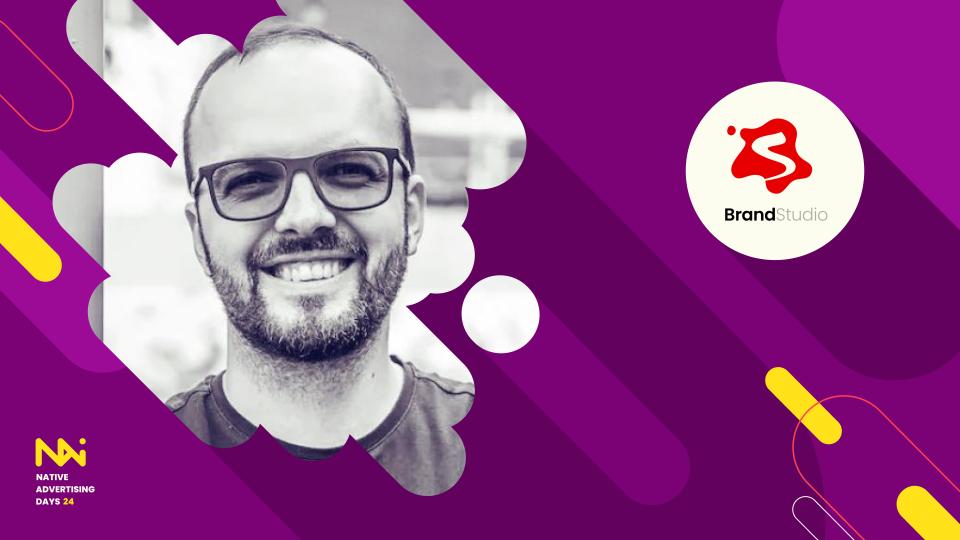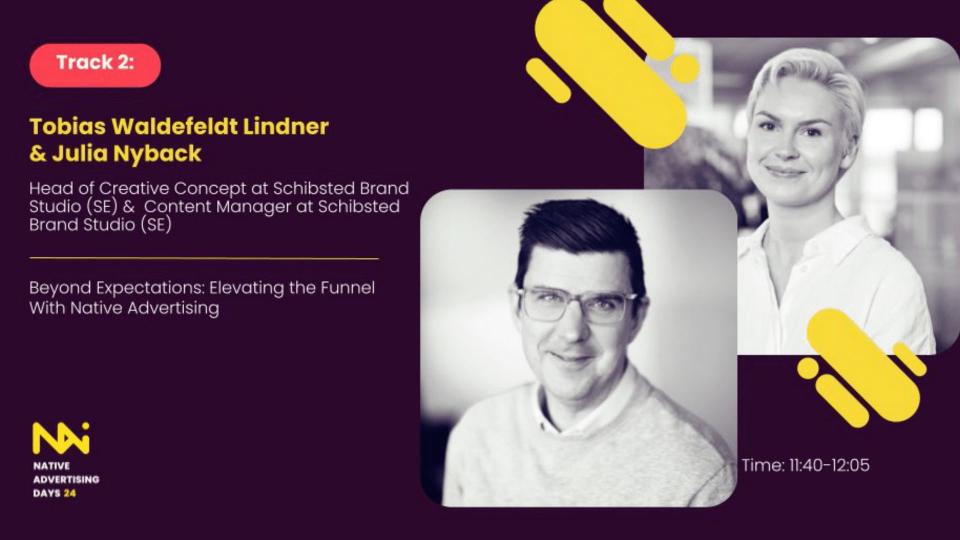This content is for members only
Supercharge your native advertising campaign
As a member of the Native Advertising Institute you will have access to the tools you need to win in native advertising.
Game-Changing Engagement: The Power of Play in Advertising
An introduction to Gamification in Advertising
Overview of gamification's role in boosting engagement
Gamification in advertising is more than just a buzzword—it’s a legitimate game-changer. During Native Advertising Days 2024, Andreas and Dennis spelt out how games in ads aren't a novelty; they’re a strategic move that drives real results. Whether it’s getting users to spend more than a minute engaging with content or sky-high click-through rates, the data doesn’t lie. When you put play into the ad experience, you get deeper engagement, more leads, and measurable success that puts traditional formats to shame.
Key statistics about engagement time, click-through rates, and user satisfaction
Here’s what’s wild: 45% of users sign up, engagement times average over a minute, and click-through rates are a whopping 23%. These aren't small numbers, folks. Gamified ads hold attention in ways your standard banners simply can’t. Every second, 15 unique players engage with these playable ads globally. Think about that—15 players a second, all willingly interacting with branded content. It's a marketer's dream and the death of banner blindness.
Introduction to the concept of playable ads and how they revolutionise ad formats
Playable ads are the next frontier. Picture this: games like “Snake” and “Spin the Wheel” right inside a banner ad, offering an interactive experience without forcing a click-away. These aren't your typical passive ad placements; they’re immersive, attention-grabbing, and designed to collect first-party data. Instead of hoping users notice your banner, playable ads invite users to stay, play, and engage. The result? Higher quality traffic, better lead generation, and a dramatically more valuable interaction.

The Psychology Behind Play and Engagement
Exploration of human instincts and behaviour related to games and competition
From the early days of childhood, we are wired to play. It’s basic biology. Whether it’s picking up a football in the office or making a game out of chores with your kids, competition triggers something primal in us. During the talk, Andreas hit on how even small competitions, like a game of Rock, Paper, Scissors, tap into this instinct. It’s why gamification works so well in advertising—people can’t resist a challenge, and advertisers know that tapping into these competitive urges gets results.
The science of play: why gamified experiences are memorable and impactful
Memory is all about emotion and chemistry. Andreas reminds us that the brain craves those dopamine hits—whether it’s from winning a game or scoring a goal. Gamified experiences stick with us because they trigger those same reward centres. That first kiss or big Monopoly win? Those moments are memorable because they evoke emotion. In marketing, playable ads tap into this psychology, making the experience more impactful than your standard banner ad. It's not just engagement—it’s engagement people will remember.
How gamification triggers emotional responses that drive higher engagement in ads
Think about it—ads that get people to play are engaging because they’re emotional. As Andreas puts it, we’re hardwired to crave competition, rewards, and challenges. When you integrate gamification into an ad, you’re not just running a campaign—you’re creating an experience that people enjoy, that they feel. And the result? Higher engagement, longer interaction times, and tons of first-party data. It’s no wonder that marketers see such high returns when they use playable ads. It’s all about triggering those emotional responses.

Playable Ads: A Solution for Publishers and Advertisers
Playable ads as a tool to combat declining ad engagement and banner blindness
We all recognise that banner ads are dying. We’ve all seen the studies on declining engagement and banner blindness—it’s a major issue. Playable ads? They flip the script. Andreas nails it when he says these ads bring interaction back into focus, transforming ads from passive eyesores into active experiences. Playable ads solve the problem of declining engagement by giving users a reason to stick around—engagement jumps from two seconds to 30 seconds or more. That’s a massive shift.
Integration of playable ads in banners, landing pages, and apps
These playable ads aren’t stuck in one format either. As Andreas points out, you can embed them anywhere: banners, landing pages, pop-ups, apps, and even QR codes. It’s flexible and scalable. Whether you’re pushing a quiz or launching a full-blown game, playable ads fit right into your existing setup. And unlike traditional formats, they keep users on your site, interacting within the ad instead of clicking away. Publishers and advertisers are waking up to the fact that this integration is seamless and powerful.
Benefits of playable ads: improved engagement, lead generation, and better ROI
The numbers don’t lie: playable ads deliver. Andreas drops some serious stats—four times higher click rates, 30+ seconds of interaction, and, most importantly, highly engaged traffic. It’s not just about clicks; these users are involved, they’re playing, they’re invested. And for advertisers, that means better ROI, richer first-party data, and higher conversion rates. Playable ads are a win-win for publishers and advertisers alike, turning CPM into CPA and CTA for maximum efficiency.
Real-World Case Studies and Applications
Success stories from various brands using playable ads
Let’s talk case studies. Andreas highlights how brands like Expert and others have seen huge wins with playable ads. Whether it’s a quiz, a Wheel of Fortune, or a knowledge-based game, these ads are converting passive viewers into active participants. We’re talking about four times the click rates and significantly longer engagement times. And the kicker? These ads are bringing in first-party data in ways traditional formats just can’t compete with.
Metrics showcasing improved interaction time, data collection, and conversions
Here’s what really makes these ads sing: the numbers. Andreas points out that interaction times for playable ads soar to over 30 seconds, a massive leap from the industry standard. These users aren’t just clicking through—they’re engaging, spending time, and sharing valuable data in the process. Quizzes and games embedded in banners aren’t just gimmicks—they’re delivering real results with measurable increases in lead generation and customer acquisition.
Examples of quizzes, personality tests, and interactive ads enhancing user experience
From Christmas calendars to classic games like Snake and Tik, Tak, Toe, playable ads are offering up personalised, interactive experiences. Andreas and Dennis discussed how these gamified formats allow users to connect with brands on a deeper level. Take the case of Expert, which used quizzes and games to generate highly engaged traffic and richer customer data. Whether it’s fun, informative, or reward-based, these ads are proving to be more than just entertaining—they drive serious results.
Wrap Up: Summary of Andreas and Dennis' Talk
Andreas and Dennis don’t just make a case for gamification; they back it up with data. The message is clear: playable ads are the future of advertising, bridging the gap between user engagement and business goals. With declining ad effectiveness and the cookie crumbling, the power of play taps into something deeply human—our need to compete, engage, and be rewarded. The talk leaves no doubt that gamified ads offer more than just a fleeting moment of attention—they create memorable, data-rich experiences that drive real ROI for brands and publishers alike.





















